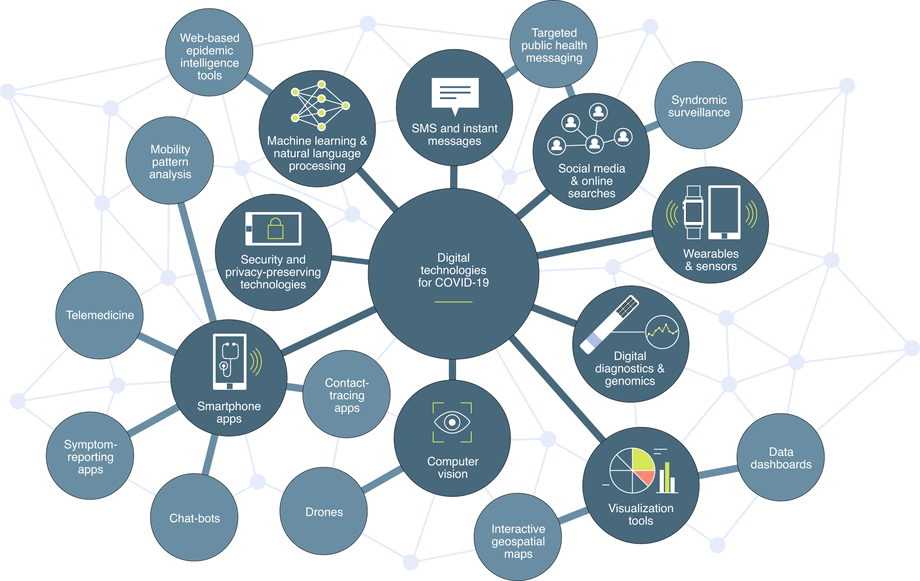Why Public Health Measures Play a Critical Role in Virus Control

Public health measures are crucial for controlling the spread of viruses. This article examines the pivotal role of public health measures in virus control, focusing on various aspects such as:
- Contact tracing
- Vaccinations
- Quarantine and isolation
- Travel restrictions
- Social distancing
- Testing and surveillance
- Public education and communication
By employing an academic writing style that is objective and impersonal, this article aims to provide a comprehensive understanding of the importance of public health measures in effective virus control.
Key Takeaways
- Contact tracing and surveillance are crucial in identifying and isolating individuals who have come into contact with an infected person, contributing to curbing the spread of the virus.
- Vaccinations are essential in preventing the spread of viral infections, as they stimulate the immune system and reduce the likelihood of infection and transmission to others, ultimately saving lives.
- Quarantine, isolation, and travel restrictions are effective measures in mitigating the spread of viruses, as they separate and restrict movement of exposed individuals and limit contact to reduce transmission.
- Social distancing and mask wearing are preventive measures that aim to minimize close contact and reduce transmission, playing a crucial role in controlling virus spread and protecting vulnerable populations.
The Importance of Public Health Measures in Virus Control
Public health measures play a critical role in virus control due to their ability to reduce transmission rates and mitigate the impact of infectious diseases on populations.
Contact tracing is an essential public health measure that involves identifying and monitoring individuals who have come into contact with an infected person. By quickly identifying and isolating these individuals, the spread of the virus can be effectively curtailed.
Additionally, public education is crucial in raising awareness about preventive measures such as hand hygiene, mask-wearing, and social distancing. This helps to empower individuals to take necessary precautions and make informed decisions to protect themselves and others from viral infections.
Public health measures, including contact tracing and public education, work together to contain the spread of viruses and safeguard the health of communities.
Understanding the Role of Contact Tracing in Controlling the Spread of Viruses
Contact tracing is an essential method for monitoring and managing the transmission of contagious diseases. Various contact tracing methods have been developed to identify and track individuals who may have been exposed to an infectious agent. These methods include manual contact tracing, digital contact tracing, and a combination of both.
The effectiveness of contact tracing in controlling the spread of viruses depends on several factors. These factors include the speed and accuracy of identification and notification of contacts, the willingness of individuals to participate in the contact tracing process, and the implementation of appropriate quarantine and isolation measures.
Studies have shown that contact tracing can be effective in reducing the spread of infectious diseases, particularly when combined with other public health measures such as testing, isolation, and social distancing. However, the success of contact tracing relies on widespread adoption, efficient infrastructure, and timely response to outbreaks.
The Significance of Vaccinations in Virus Control
Vaccines play a crucial role in preventing the spread of viral infections, offering a powerful tool for controlling the transmission of diseases.
By stimulating the immune system to produce specific antibodies, vaccines provide individuals with protection against the targeted virus, reducing the likelihood of infection and subsequent transmission to others.
Moreover, vaccines have been proven to save lives by preventing severe illness, complications, and mortality associated with viral infections.
Vaccines Prevent Viral Spread
Immunization against viral pathogens is an effective strategy for preventing the transmission and spread of infectious diseases. Vaccine distribution plays a crucial role in achieving widespread immunization coverage and preventing the rapid spread of viral infections.
The distribution process involves the allocation and delivery of vaccines to various populations, ensuring equitable access to immunization. Vaccines not only protect individuals but also contribute to the concept of herd immunity. Herd immunity occurs when a significant proportion of the population is immune to a particular virus, either through vaccination or prior infection, making it difficult for the virus to spread.
Vaccines, by stimulating the body’s immune response, help in achieving high levels of immunity within communities, thereby reducing the likelihood of viral transmission and ultimately controlling infectious diseases.
Vaccines Save Lives
The effectiveness of vaccination programs is evident in the significant reduction of morbidity and mortality rates associated with infectious diseases. Vaccines play a crucial role in preventing the spread of diseases and saving lives. Through widespread vaccination, herd immunity can be achieved, which provides indirect protection to those who cannot be vaccinated due to medical reasons. Vaccination programs also contribute to the overall health of the population by reducing the burden on healthcare systems and the economic impact caused by disease outbreaks. However, the success of vaccination programs relies heavily on efficient vaccine distribution strategies. Ensuring equitable access to vaccines is essential to maximize their impact and control the spread of infectious diseases. Table 1 below illustrates the importance of vaccination in preventing disease and its impact on morbidity and mortality rates.
Table 1:
| Disease | Morbidity Rate Reduction (%) | Mortality Rate Reduction (%) |
|---|---|---|
| Measles | 95 | 96 |
| Polio | 99 | 99 |
| Tetanus | 99 | 99 |
The Role of Quarantine and Isolation in Preventing the Spread of Viruses
Quarantine and isolation measures have been implemented as effective public health strategies in mitigating the spread of viruses.
Quarantine refers to the separation and restriction of movement of individuals who have been exposed to a contagious disease but are not yet showing symptoms.
On the other hand, isolation involves the separation of individuals who are already showing symptoms of the disease.
These measures are based on the understanding that viruses can spread easily from person to person, and by limiting contact between infected individuals and the general population, transmission can be significantly reduced.
The effectiveness of quarantine and isolation measures in preventing the spread of viruses has been demonstrated in numerous outbreaks, including the SARS-CoV-2 pandemic.
However, the success of these measures relies on strict adherence to protocols and guidelines, as well as effective communication and support for those affected.
The Impact of Travel Restrictions on Virus Control
Restricting travel has been widely implemented as a strategy to limit the spread of viruses across geographical boundaries. The impact of international travel on virus control is a topic of great interest and concern.
Travel restrictions have been shown to have several effects on virus control efforts:
- Reduction in imported cases: Travel restrictions can help prevent the introduction of infected individuals from high-risk areas into low-risk areas.
- Slowing down transmission: By limiting travel, the movement of infected individuals is reduced, thereby slowing down the spread of the virus within and between countries.
- Economic implications: Travel restrictions can have significant economic consequences, particularly for industries heavily reliant on tourism and international trade.
Understanding the impact of travel restrictions on virus control is crucial for policymakers to strike a balance between public health protection and economic stability. Further research is needed to assess the long-term consequences and effectiveness of travel restrictions in controlling the spread of viruses.
The Effectiveness of Social Distancing in Virus Control
Social distancing has been implemented as a preventive measure to minimize close contact and reduce the potential transmission of infectious diseases. It aims to limit the spread of respiratory droplets between individuals, which is a common route of transmission for many viral infections.
Alongside social distancing, wearing masks has been widely advocated as an additional measure to further reduce the risk of transmission. Numerous studies have demonstrated the effectiveness of mask wearing in preventing the spread of respiratory droplets and protecting both the wearer and those around them.
However, the impact of public health messaging on the adoption and adherence to mask wearing practices is crucial. Clear and consistent communication regarding the importance and benefits of mask wearing can significantly enhance its overall effectiveness in controlling the transmission of infectious diseases.
The Role of Testing and Surveillance in Identifying and Controlling Viral Outbreaks
Testing and surveillance are essential components in identifying and managing viral outbreaks, as they enable the timely detection and monitoring of viral infections within a population. The accuracy of testing methods is crucial in ensuring accurate diagnosis and appropriate intervention strategies. Advances in surveillance technology have greatly enhanced the efficiency and effectiveness of outbreak control measures.
Here are three key aspects related to testing accuracy and surveillance technology:
- Sensitivity and specificity: Testing accuracy is determined by the ability of a test to correctly identify positive and negative cases. Sensitivity measures the ability to correctly identify true positives, while specificity measures the ability to correctly identify true negatives.
- Rapid diagnostic tests: These tests provide quick results, allowing for immediate identification and isolation of infected individuals, reducing the risk of further transmission.
- Surveillance technology: Advanced surveillance systems, such as real-time monitoring and data analysis, enable early detection of outbreaks, facilitating prompt implementation of control measures and minimizing the spread of the virus.
The Importance of Public Education and Communication in Virus Control
Effective dissemination of accurate information through various channels is essential for raising public awareness and promoting understanding of preventive measures in the control of viral outbreaks.
Public education strategies and effective communication play a critical role in ensuring that individuals are well-informed about the risks associated with viral outbreaks and the necessary precautions to take. This can be achieved through a combination of traditional and digital media platforms, such as television, radio, social media, and websites.
Public health agencies and organizations should collaborate with media outlets to develop clear and concise messages that are easily understandable by the general public. Additionally, providing educational materials, such as brochures and posters, in multiple languages can enhance accessibility and inclusivity.
Utilizing community outreach programs and engaging with community leaders can also help disseminate information effectively, especially in areas with limited access to technology.
Overall, effective public education strategies and communication are essential components in controlling viral outbreaks and reducing the spread of infectious diseases.
Frequently Asked Questions
How Does the Implementation of Public Health Measures Affect the Economy?
The implementation of public health measures, such as social distancing and lockdowns, has a significant economic impact. These measures often lead to job loss, as businesses are forced to close or operate at reduced capacity.
What Are the Potential Long-Term Effects of Contact Tracing on Individuals’ Privacy?
Data protection concerns and ethical implications arise from contact tracing, potentially impacting individuals’ privacy in the long term. It is important to consider the balance between public health benefits and safeguarding personal information in implementing such measures.
Are Vaccinations the Only Effective Way to Control the Spread of Viruses?
Alternative virus control methods, such as public health measures, play a significant role in controlling the spread of viruses. Vaccinations are not the only effective method; herd immunity and other strategies also contribute to virus control.
How Does the Length of Quarantine and Isolation Periods Impact the Effectiveness of Virus Control?
The length of quarantine and isolation periods impacts the effectiveness of virus control by reducing the transmission of the virus from asymptomatic carriers and allowing for effective testing strategies to identify and isolate infected individuals.
What Are the Potential Social and Psychological Consequences of Travel Restrictions?
The potential social and psychological consequences of travel restrictions include increased social isolation and negative impacts on mental health. These restrictions may limit social interactions and disrupt support systems, leading to feelings of loneliness, anxiety, and depression.








